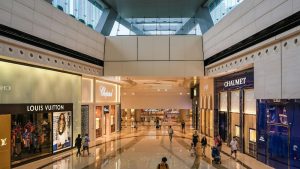Luxury goods, once shielded from economic downturns, are encountering a nuanced phase amidst macroeconomic challenges. The COVID-19 pandemic initially fueled a surge in the luxury market as the affluent reveled in purchases like Birkin bags and rare watches. However, recent indicators suggest a deceleration in the previously heralded "Roaring Twenties" luxury boom.
China, a significant player in the luxury market, experienced an early post-COVID sales boost in 2023. However, this momentum proved short-lived due to the nation's slower economic recovery and global uncertainties, leading to a contraction in luxury spending. Industry expert Claudia D'Arpizio highlights geopolitical shifts and subdued consumer confidence as contributing factors to the challenges faced by luxury markets.
Major players like LVMH, responsible for brands such as Dior and Louis Vuitton, recently witnessed a slowdown in Q3 revenue growth compared to the previous year. This trend echoed across competitors like Kering and Burberry, while Richemont's half-year sales, despite a 6% increase, fell short of expectations. Notably, secondary market prices for prestigious watch brands Rolex and Patek Philippe experienced a decline.
While outliers like Hermès defy the downturn with robust Q3 sales, the luxury sector as a whole grapples with uncertainties. Niche segments like luxury cruises, however, buck the trend, boasting a remarkable 116% YoY growth in constant currency terms.
The current complexity of the luxury market prompts questions about its true trajectory. Conflicting reports on gains and spending ease add to the uncertainty. Due to accumulated savings and a lack of indulgence options, the pandemic-induced luxury boom led to an increase in spending on high-end goods.
However, as interest rates and inflation rise, consumers are tightening their purse strings and becoming more discerning in their expenditures. The monstrous spending during the pandemic was an anomaly rather than a sustainable norm. The current slowdown reflects a gradual return to pre-COVID standards.
Luxury executives, including Richemont chairman Johann Rupert, emphasize the ongoing normalization of market growth expectations across the industry. Data from Deloitte supports this, indicating that the top 100 luxury companies became more substantial and profitable than ever in FY 2022.
Despite the apparent downturn, global luxury industry consumption for 2023 is estimated at approximately $1.62 trillion, around 70% higher than 2019 levels in constant currency terms. This growth is significant, considering an estimated 29% price increase across the industry during the same period to counter rising production costs.
Consumer preferences within the luxury market are evolving, with a notable shift towards experiential luxury. Luxury cruises, travel, and hospitality are thriving, indicating a redirection of spending towards experiences rather than traditional products.
As the luxury market grapples with conflicting signals, experts anticipate a reshuffling in 2024. The rising global upper middle class is driving the luxury industry's resilience, which positions it well for the future despite ongoing economic challenges. The year ahead may present challenges, but the luxury sector remains a robust player in the global economy.




















